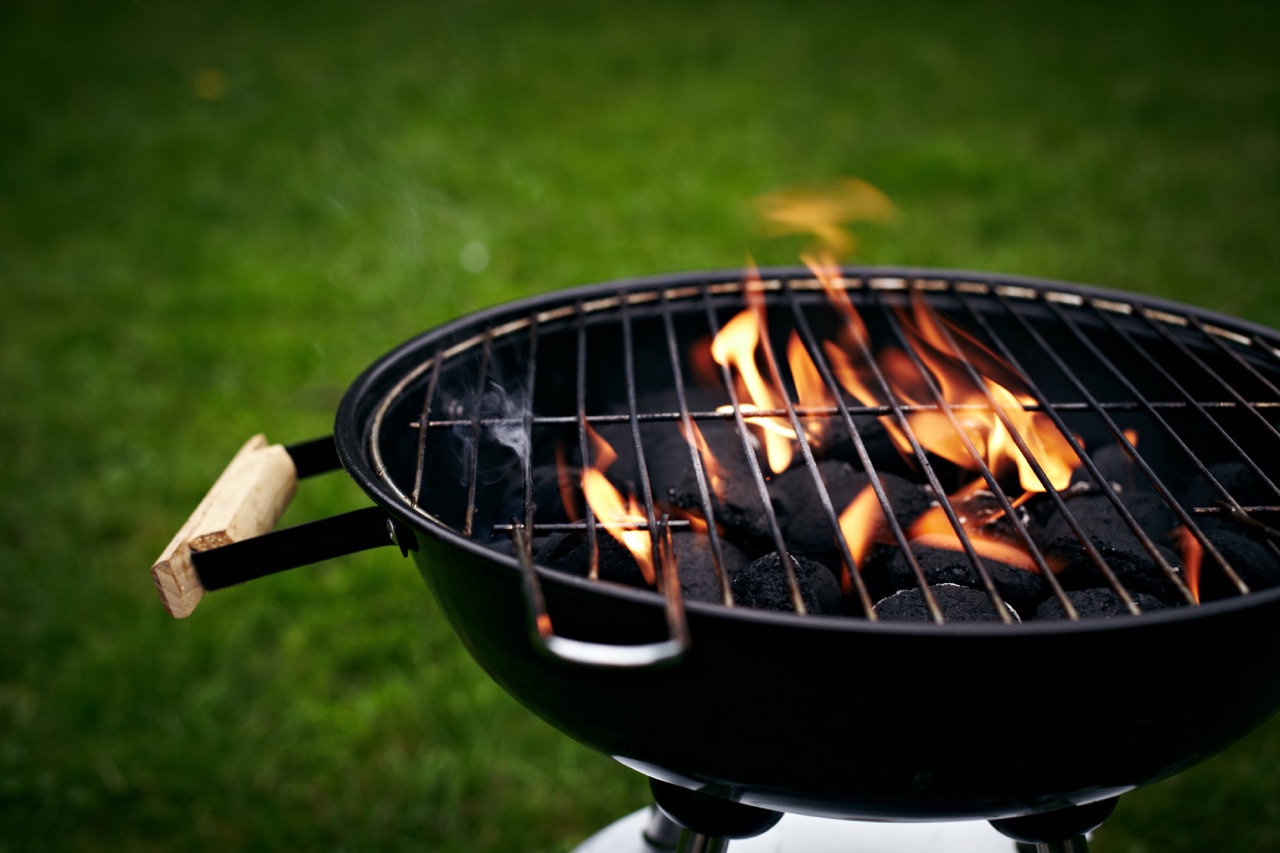

Articles
What Are Grills
Modified: October 28, 2024
Discover everything you need to know about grills in these insightful articles. From types and features to tips and maintenance, enhance your grilling skills today.
(Many of the links in this article redirect to a specific reviewed product. Your purchase of these products through affiliate links helps to generate commission for Storables.com, at no extra cost. Learn more)
What Are Grills
Grills are a popular cooking tool used for outdoor cooking and barbecuing. They have become a staple in many households, especially during the summer months when people gather for cookouts and backyard parties. Grills come in various sizes and types, with each offering its own unique features and cooking capabilities. In this article, we will explore the different types of grills, the materials they are made of, as well as the benefits and drawbacks of using grills for cooking.
Key Takeaways:
- Grilling is a rich tradition with a diverse history, offering a wide range of cooking options and social experiences. From ancient origins to modern innovations, grilling brings people together for delicious meals and unforgettable memories.
- Grilling provides a unique culinary canvas for flavorful creations, from juicy burgers to perfectly seared steaks and mouthwatering seafood. Embracing safety, maintenance, and creativity, grilling is a delightful way to savor the joys of good food and cherished company.
Read more: What To Make On The Grill
Introduction
Grilling is not just a method of cooking; it’s a social and cultural experience that brings people together. Whether you’re grilling juicy burgers, perfectly charred steaks, or mouthwatering vegetables, the aroma and flavors that come from the grill are unmatched. Grills provide a unique cooking experience, allowing for the perfect combination of smoky, charred goodness and juicy, tender meats.
Grills have been around for centuries, with their origins dating back to ancient civilizations. Over time, they have evolved from simple fire pits to intricate and advanced cooking devices. Today, grills come in a variety of shapes, sizes, and styles, catering to different cooking preferences and lifestyles.
In this article, we will delve into the history of grills, explore the various types of grills available, discuss the materials used in their construction, and highlight the benefits and drawbacks of using grills for cooking. Whether you’re a seasoned grilling enthusiast or a newbie looking to embark on your grilling journey, this article will provide you with valuable insights into the world of grills.
So, grab your apron, fire up the grill, and let’s dive into the wonderful world of grilling!
History of Grills
The history of grilling can be traced all the way back to ancient times. The earliest evidence of outdoor cooking dates back to primitive humans, who cooked their food over open fires to survive. As civilization progressed, so did the methods of cooking, leading to the development of more sophisticated cooking devices.
One of the earliest forms of grills can be found in ancient Greece. The Greeks used a simple metal grate known as a “mangal” to grill their food over charcoal or wood fires. This concept of grilling slowly spread to other civilizations, including the Roman Empire, where the wealthy would host extravagant feasts with whole animals being cooked over open flames.
During the Middle Ages, grilling became a popular cooking method in Europe. Large fire pits, called “spits,” were used to cook large meats, such as whole pigs or lambs, for festive occasions. These spits were manually turned by hand, ensuring even cooking and crisp, flavorful skin.
In the 18th century, the invention of the cast iron stove revolutionized the way people cooked indoors. However, it wasn’t until the 20th century that grills, as we know them today, started to gain popularity. In the 1950s, George Stephen, a welder from Chicago, introduced the iconic Weber kettle grill. This innovative design featured a round shape and a lid, allowing for better heat control and the ability to smoke food.
Since then, grills have continued to evolve and diversify. From gas grills to electric grills, infrared grills to pellet grills, the options are endless. Each advancement in technology has made grilling more convenient, efficient, and versatile, catering to the diverse needs and preferences of grill enthusiasts around the world.
Today, grilling has become a beloved pastime and a cultural phenomenon. It is not just a way to cook food; it is a way to connect with friends and family, enjoy the outdoors, and create unforgettable memories. The history of grills is a testament to humans’ innate desire to gather around the fire and share delicious meals together.
Types of Grills
When it comes to grills, there is no shortage of options to choose from. Each type of grill offers its own unique features and cooking methods, catering to different preferences and culinary needs. Let’s explore some of the most popular types of grills.
1. Charcoal Grills
Charcoal grills are a classic choice for grilling enthusiasts. They use charcoal briquettes or lump charcoal as the fuel source, providing that distinct smoky flavor that is highly coveted by grilling aficionados. Charcoal grills offer excellent heat control and can reach high temperatures, making them perfect for searing steaks and burgers.
Read more: What Is Infrared Grill
2. Gas Grills
Gas grills are known for their convenience and ease of use. They run on either propane or natural gas and offer quick and consistent heat. With gas grills, you can easily adjust the temperature using the control knobs, allowing for precise cooking. They are popular among those who prefer a hassle-free grilling experience.
3. Electric Grills
Electric grills are ideal for individuals who do not have outdoor space or are restricted by gas or charcoal restrictions. These grills are powered by electricity and provide a smoke-free cooking experience. Electric grills heat up quickly and are easy to clean, making them a great option for indoor or balcony grilling.
4. Pellet Grills
Pellet grills combine the convenience of gas grills with the flavor of wood-fired cooking. These grills use wood pellets as the fuel source, which are fed into a firebox by an electric auger. Pellet grills offer precise temperature control and have the ability to smoke, grill, roast, and even bake. They are a favorite among those who want the versatility of different cooking methods.
5. Kamado Grills
Kamado grills have a unique, egg-shaped design that originated from ancient clay cooking vessels. They are made of ceramic, which helps retain heat and moisture, resulting in juicy and tender meats. Kamado grills excel at both low and slow cooking and high-temperature searing, making them versatile for various cooking techniques.
These are just a few examples of the types of grills available in the market. Other notable mentions include infrared grills, portable grills, and hybrid grills. Consider your cooking style, space availability, and budget when choosing the right grill for your needs. Regardless of the type you choose, grilling is a fantastic way to enjoy delicious meals and create memorable experiences with family and friends.
Read more: What To Clean A Grill With
Materials Used for Grills
Grills are constructed using a variety of materials, each with its own set of benefits and considerations. The choice of materials can impact factors such as heat retention, durability, and maintenance requirements. Let’s explore some of the common materials used for grills.
1. Stainless Steel
Stainless steel is a popular choice for grills due to its durability and resistance to corrosion. It is highly heat-resistant, making it suitable for high-temperature cooking. Stainless steel grills have a sleek and modern appearance and are known for their longevity. However, it’s important to note that not all stainless steel grills are created equal – higher-grade stainless steel is more resistant to rust and discoloration.
2. Cast Iron
Cast iron grills have excellent heat retention properties, which allows for even and consistent cooking. These grills are known for their ability to create impressive grill marks and impart a delicious charred flavor to the food. However, cast iron grills require regular seasoning and proper maintenance to prevent rusting. Additionally, they tend to be heavy and may take longer to heat up compared to other materials.
3. Ceramic
Ceramic grills, such as kamado grills, are popular for their superior heat retention and moisture-locking capabilities. The ceramic material helps maintain a stable cooking temperature while keeping the food moist and flavorful. Ceramic grills are typically more expensive but are valued for their versatility in cooking styles, including low and slow smoking as well as high-temperature searing.
Read more: What Is The Best Outdoor Grill?
4. Aluminum
Aluminum is a lightweight and affordable option for grill construction. It offers good heat conduction, allowing for efficient cooking. Aluminum grills are corrosion-resistant and easy to clean. However, they may not retain heat as well as other materials, and they may not have the same level of durability as stainless steel or cast iron.
5. Porcelain-coated Steel or Cast Iron
Grills with a porcelain coating on steel or cast iron provide the benefits of these respective materials with an added layer of protection against rust and corrosion. The porcelain coating also makes the grills easier to clean and maintain. However, it’s important to handle these grills with care to avoid chipping the porcelain coating.
It’s worth mentioning that some grills may incorporate a combination of different materials to optimize performance and durability. When choosing a grill, consider factors such as the cooking style, desired longevity, and maintenance requirements to determine the material that best suits your needs. Regular cleaning and proper care will help prolong the life of your grill, regardless of the material it’s made of.
Benefits and Drawbacks of Grills
Grills offer a unique cooking experience and come with both advantages and disadvantages. Understanding these benefits and drawbacks can help you make an informed decision about whether grilling is the right cooking method for you. Let’s explore the pros and cons of using grills.
Benefits of Grills
1. Flavorful Results
One of the biggest advantages of grilling is the incredible flavor it imparts to food. Whether you’re grilling meat, seafood, or vegetables, the direct heat and infusion of smoky flavors create a unique and delicious taste that cannot be replicated with other cooking methods.
2. Versatile Cooking Options
Grills offer versatility in cooking techniques. You can grill, smoke, roast, or even bake on certain types of grills, allowing for a wide range of culinary possibilities. From classic barbecued meats to grilled pizzas and vegetables, the options are endless.
3. Reduced Fat Content
Grilling is a healthier cooking option compared to other methods such as frying. When grilling, excess fats and oils drip away from the food, resulting in a lower overall fat content. This makes grilling a popular choice for those looking to enjoy flavorful meals while watching their calorie intake.
4. Social and Outdoor Experience
Grilling is not just about cooking; it’s about the entire experience. Grilling brings people together, whether it’s a small family gathering or a large backyard party. It provides an opportunity to enjoy the outdoors, bond with loved ones, and create lasting memories around delicious food.
Read more: What Is Grilling In Microwave Oven
Drawbacks of Grills
1. Weather Dependency
Grilling is highly weather-dependent, especially for outdoor grilling. Rain, wind, or extreme heat can affect the grilling process and make it challenging to achieve consistent results. It’s important to have alternative indoor cooking options in case the weather does not cooperate.
2. Time and Preparation
Grilling may require more time and preparation compared to other cooking methods. Preheating the grill, marinating the food, and ensuring proper temperature control all take time and effort. Additionally, some cuts of meat or larger items may require longer cooking times, requiring patience and planning in advance.
3. Limited Control over Heat
While grills offer good heat control, they may not provide the same precision as stovetop cooking or ovens. It may take some practice to learn how to manage and adjust the heat to achieve the desired results. Certain grills, such as charcoal grills, require more attention and skill to control the temperature effectively.
4. Maintenance and Cleaning
Grills, especially those made of stainless steel or cast iron, require regular maintenance and cleaning to prevent rust and prolong their lifespan. Grease and food residue can build up over time, and cleaning the grates and other components can be a time-consuming task.
Despite these drawbacks, the joy and satisfaction of grilling often outweigh the challenges. The smoky flavors, the outdoor experience, and the quality time spent with loved ones make grilling a beloved cooking method for many individuals and families.
Popular Grill Brands
When it comes to grilling, there are several reputable brands that have established themselves as leaders in the industry. These brands are known for their innovation, quality craftsmanship, and exceptional performance. Let’s take a look at some of the popular grill brands that are highly recommended by grilling enthusiasts.
1. Weber
Weber is a well-respected brand that has been synonymous with grilling for decades. They are famous for their iconic kettle grills, which revolutionized the way people barbecue. Weber offers a wide range of grills, including gas, charcoal, and electric models, catering to different cooking preferences and needs. With their commitment to quality and durability, Weber grills are a favorite among both amateur cooks and seasoned grill masters.
2. Traeger
Traeger is a leading brand in the pellet grill industry and has gained a strong following for its innovative wood-fired cooking technology. Their grills are known for their versatility, allowing for precise temperature control and the ability to smoke, grill, bake, and roast. With a wide selection of sizes and features, Traeger offers options for all levels of grilling enthusiasts.
Read more: What Are The Best Gas Grills
3. Big Green Egg
Big Green Egg is a manufacturer of kamado-style ceramic grills, which are renowned for their exceptional heat retention and versatility. These grills are capable of reaching high temperatures for searing as well as maintaining low temperatures for slow cooking and smoking. Big Green Egg has built a loyal fan base and is revered by grillers who value the ultimate craftsmanship and performance.
4. Napoleon
Napoleon is a Canadian brand that has made a name for itself in the grilling industry. They offer a range of innovative gas grills, charcoal grills, and hybrid models that combine the best features of both. Napoleon grills are known for their sleek design, high-quality construction, and advanced cooking technologies, making them a popular choice among grill enthusiasts.
5. Char-Broil
Char-Broil is a well-established brand that offers a wide range of affordable grilling options. They specialize in gas grills, providing reliable performance and convenient features at an accessible price point. Char-Broil grills are designed for easy maintenance and use, making them a popular choice for beginners and those looking for a budget-friendly option.
While these are just a few examples, there are many other reputable grill brands in the market, such as Broil King, Lynx, and Kamado Joe. When choosing a grill, consider factors such as cooking style, budget, and desired features to find the brand that best suits your needs. Regardless of the brand, investing in a high-quality grill will enhance your grilling experience and ensure delicious results every time.
How to Clean and Maintain Grills
Cleaning and maintaining your grill is essential for ensuring optimal performance, longevity, and food safety. Regular maintenance will help keep your grill in top shape and ready for delicious grilling adventures. Here are some steps to effectively clean and maintain your grill:
Read more: What Is A Smokeless Indoor Grill
1. Preparing the Grill
Before you start cleaning, make sure the grill is turned off and completely cooled down. Disconnect any propane or gas sources if applicable. It’s also helpful to gather the necessary cleaning tools, such as a grill brush, mild dish soap, warm water, and a sponge or cloth.
2. Cleaning the Grates
Start by removing the grates from the grill. Scrub the grates using a grill brush to remove any accumulated food debris or grease. For tougher stains, soak the grates in warm, soapy water for a few minutes before scrubbing. Rinse the grates thoroughly with clean water and allow them to air dry completely before placing them back into the grill.
3. Cleaning the Exterior
Wipe down the exterior surfaces of the grill using a sponge or cloth dipped in warm, soapy water. Be sure to clean the handles, control knobs, and any other parts that come into contact with grease or food residue. For stainless steel grills, use a stainless steel cleaner or polish to restore the shine. Rinse with clean water and dry with a soft cloth.
4. Deep Cleaning for Stubborn Stains
If there are stubborn grease or food stains on the grates or interior surfaces, you may need to do a deep cleaning. One method is to heat up the grill for a few minutes to loosen the residue, then scrub the grates and surfaces with a grill brush or scrubber. For grease that has accumulated in the drip tray or on the burner tubes, remove them carefully and clean with warm, soapy water.
Read more: What Is The Best Indoor Grill
5. Periodic Maintenance
Regularly check the burners, igniters, and gas lines for any signs of blockage or damage. Clean out any clogs by gently scrubbing with a brush or using a straightened paperclip. Replace any damaged or worn-out parts as needed. It’s also important to check the propane or gas connections for leaks by applying a solution of soapy water and looking for any bubbles.
6. Covering and Storing
When not in use, protect your grill from the elements by covering it with a grill cover. This will help prevent rust, dirt, and debris from accumulating on the grill. If possible, store the grill in a dry area or garage during the winter months to further protect it from harsh weather conditions.
Regular cleaning and maintenance will not only extend the life of your grill but also ensure safe and enjoyable grilling experiences. Remember to follow the manufacturer’s guidelines for specific cleaning instructions and recommended cleaning products. With proper care, your grill will continue to serve up delicious meals for many seasons to come.
Safety Tips for Grilling
Grilling is a fun and delicious way to cook, but it’s important to prioritize safety while enjoying your outdoor cooking adventures. By following these safety tips, you can ensure a safe and enjoyable grilling experience:
1. Positioning the Grill
Place your grill in a well-ventilated area away from any structures, overhanging branches, or flammable materials. Ensure that the grill is on a stable and level surface to prevent any accidents or tip-overs.
Read more: What Temperature Is Medium Heat On A Grill
2. Lighting the Grill Safely
If you’re using a charcoal grill, use charcoal starter fluid or a chimney starter to light the charcoal. Never use gasoline or any other flammable liquids as they can cause dangerous flare-ups. For gas grills, always carefully follow the manufacturer’s instructions for lighting and use.
3. Supervise the Grill
Never leave a lit grill unattended. It’s important to keep a constant eye on the grill, especially when there are children or pets around. Accidents can happen quickly, and it’s crucial to be present and attentive to prevent any mishaps.
4. Keep a Safe Distance
Keep a safe distance from the grill when it’s in use. Avoid leaning over the grill and always use long-handled grilling tools to prevent burns. Make sure to keep children and pets away from the grill area to avoid any accidents or injuries.
5. Proper Ventilation
Grilling should only be done in well-ventilated areas. Gas and charcoal grills produce carbon monoxide, a colorless and odorless gas that can be dangerous if inhaled in high concentrations. Ensure there is proper airflow and avoid grilling in enclosed or indoor spaces.
Read more: What To Cook In A George Foreman Grill
6. Safe Food Handling
Practice safe food handling to prevent any foodborne illnesses. Keep raw meats separate from cooked foods to avoid cross-contamination. Use separate cutting boards and utensils for raw and cooked foods, and always wash your hands thoroughly before and after handling raw meats.
7. Extinguishing the Grill Safely
When you’re finished grilling, extinguish the charcoal by closing the grill’s vents and allowing the coals to cool down completely. For gas grills, turn off the burners and the propane or natural gas source. Always ensure that the grill is completely cooled before cleaning or storing it.
8. Fire Safety Precautions
Have a fire extinguisher or a bucket of sand nearby in case of emergencies. Familiarize yourself with the proper operation of a fire extinguisher and know when to contact emergency services. It’s better to be prepared and have the necessary tools readily available.
Remember, grilling is meant to be a safe and enjoyable activity. By following these safety tips, you can minimize potential risks and focus on creating delicious meals for you and your loved ones. Happy grilling!
Grilling Recipes and Tips
Grilling opens up a world of culinary possibilities, allowing you to create delicious and flavorful dishes. Whether you’re a grilling novice or a seasoned pro, here are some grilling recipes and tips to enhance your outdoor cooking experience:
Read more: What Is The Best Smokeless Indoor Grill
1. Marinate for Maximum Flavor
Marinating your meats, poultry, and seafood before grilling can add incredible flavor and tenderness. Use a mixture of oil, acid (such as vinegar or citrus juice), herbs, and spices to create a marinade. Let the food marinate for at least 30 minutes to a few hours before grilling to allow the flavors to penetrate the meat.
2. Perfectly Juicy Burgers
To achieve perfectly juicy burgers, start with high-quality ground beef with a fat content of around 80/20 (80% lean meat, 20% fat). Avoid over-mixing the ground beef as it can result in dense burgers. Create an indentation in the center of each patty to help them cook evenly. Grill the patties over medium-high heat, flipping only once, until they reach an internal temperature of 160°F (71°C).
3. Sizzling Steaks
For flavorful and tender steaks, start with room temperature meat and season generously with salt and pepper just before grilling. Preheat your grill to high heat for a good sear. Sear the steaks on each side for a couple of minutes and then move them to indirect heat to finish cooking to your desired doneness. Use a meat thermometer to ensure the steaks are cooked to the right internal temperature.
4. Grilling Vegetables
Grilled vegetables are a delicious and healthy addition to any meal. To prevent them from sticking to the grill, toss the vegetables in a little oil before grilling. Grill them over medium heat until they are tender and lightly charred. Adding a sprinkle of salt, pepper, and your favorite herbs or spices can enhance the flavors.
Read more: What Is The Best George Foreman Grill
5. Grilling Seafood
Grilling seafood can elevate your summer dining experience. Delicate fish fillets can be placed on a greased grill grate or wrapped in foil to prevent sticking. Shrimp and scallops can be threaded onto skewers for easy grilling. Brush the seafood with oil or marinade to keep it moist and prevent it from drying out. Cook seafood over medium heat until it is opaque and flakes easily.
6. Grilled Pizza
Grilling pizza adds a delightful smoky flavor to the crust. Stretch out your pizza dough to your desired thickness and shape. Preheat your grill to high heat and lightly brush the dough with olive oil. Place the dough directly onto the grill grates and cook until it starts to bubble and has grill marks. Flip the dough over, add your favorite toppings, and close the grill lid to melt the cheese and cook the toppings.
7. Experiment with Seasonings and Sauces
Don’t be afraid to get creative with your grilling seasonings and sauces. From homemade rubs and spice blends to a variety of marinades and barbecue sauces, you can customize the flavors to suit your taste preferences. Try a combination of herbs, spices, citrus zest, and even a touch of sweetness for a unique and delicious twist.
Remember to keep an eye on the grill and adjust heat levels as needed. Use the appropriate grilling tools and follow food safety guidelines to ensure a safe and enjoyable grilling experience. Whether you’re grilling classic favorites or trying out new recipes, let your creativity shine and savor the mouthwatering flavors that can only be achieved through grilling.
Conclusion
Grilling is more than just a cooking method – it’s a sensory experience that brings people together. From the enticing aroma of sizzling meat to the mouthwatering flavors that emerge, grilling is a beloved and timeless tradition. Whether you’re a seasoned grill master or just starting your grilling journey, there’s something magical about cooking over an open flame.
In this article, we explored the world of grills, from their historical roots to the various types available on the market today. We discussed the materials used in grill construction and the benefits and drawbacks of grilling. We also highlighted popular grill brands known for their quality and performance, as well as shared essential tips for cleaning, maintaining, and staying safe while grilling.
Grilling is an art form that allows you to unleash your creativity, experiment with flavors, and share delicious meals with family and friends. Whether you prefer the smoky taste of charcoal or the convenience of gas grills, the possibilities are endless. From perfectly seared steaks and juicy burgers to grilled vegetables and mouthwatering seafood, grilling offers a vast canvas for culinary exploration.
Remember, grilling is about more than just the food. It’s about the memories created, the laughter shared, and the joy of connecting with loved ones around the grill. So, fire up your grill, embrace the adventure, and savor the flavors that only grilling can provide.
As with any cooking method, always prioritize safety, cleanliness, and proper maintenance. Follow the manufacturer’s guidelines for your specific grill and take precautions to prevent accidents. With the right tools, techniques, and a little bit of practice, you’ll become a true grilling aficionado.
So, gather your loved ones, unleash your inner chef, and embark on a delicious grilling journey. Whether it’s a casual weeknight dinner or a festive gathering, grilling is a wonderful way to create lasting memories and enjoy the simple pleasures of good food and great company. Happy grilling!
Frequently Asked Questions about What Are Grills
Was this page helpful?
At Storables.com, we guarantee accurate and reliable information. Our content, validated by Expert Board Contributors, is crafted following stringent Editorial Policies. We're committed to providing you with well-researched, expert-backed insights for all your informational needs.
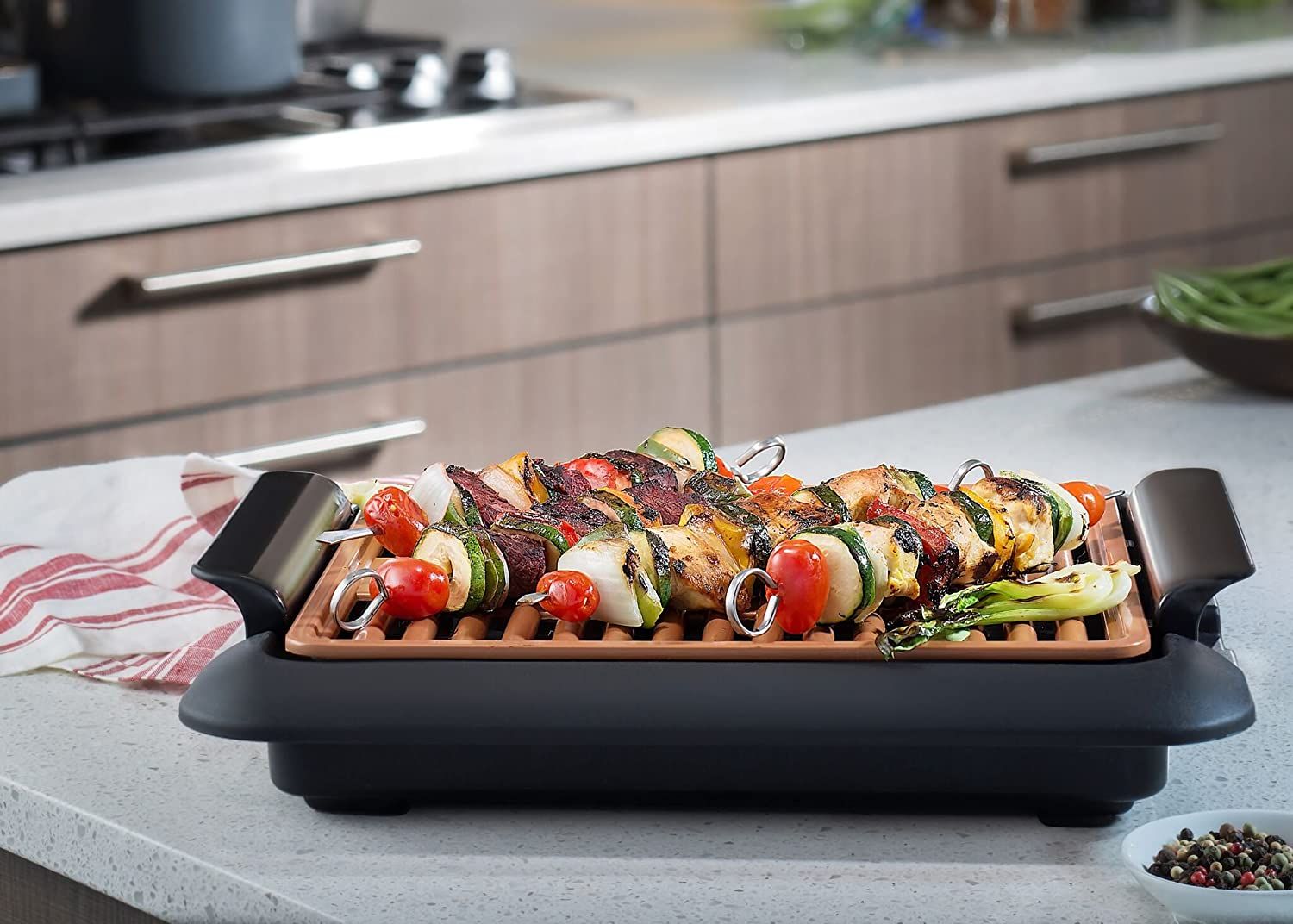
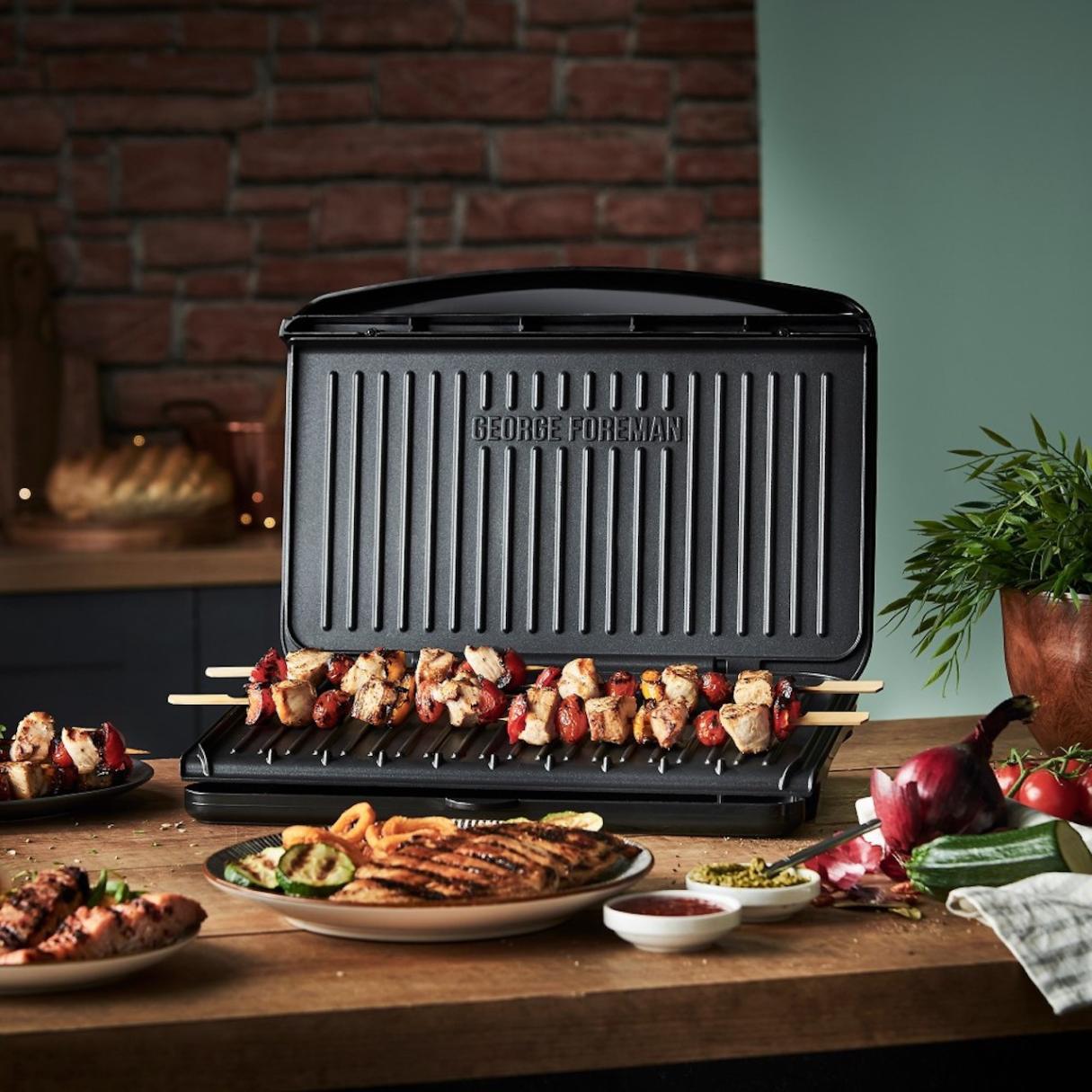
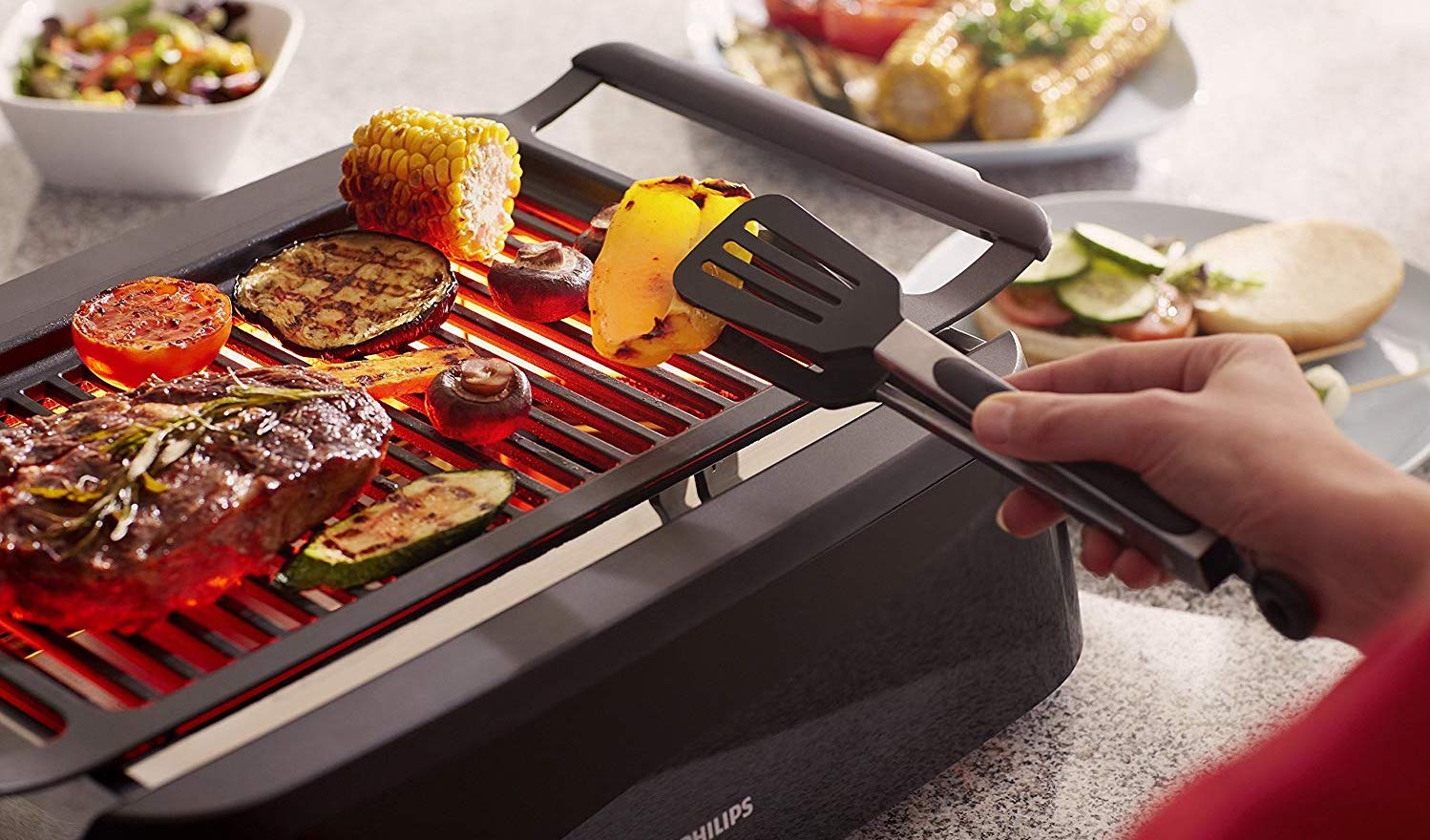
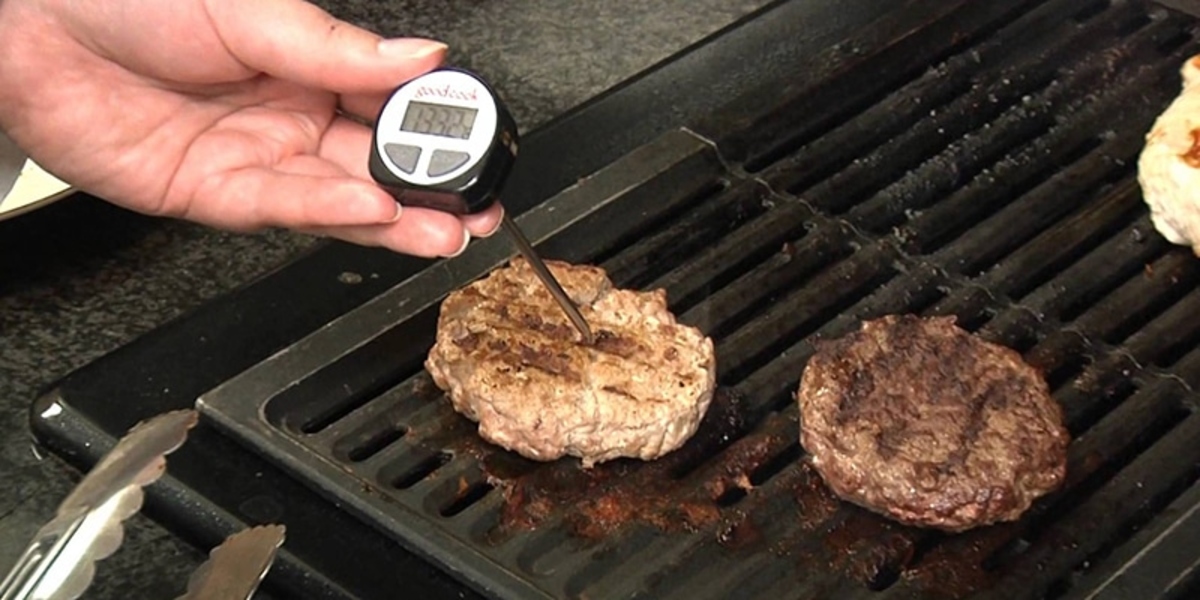

0 thoughts on “What Are Grills”